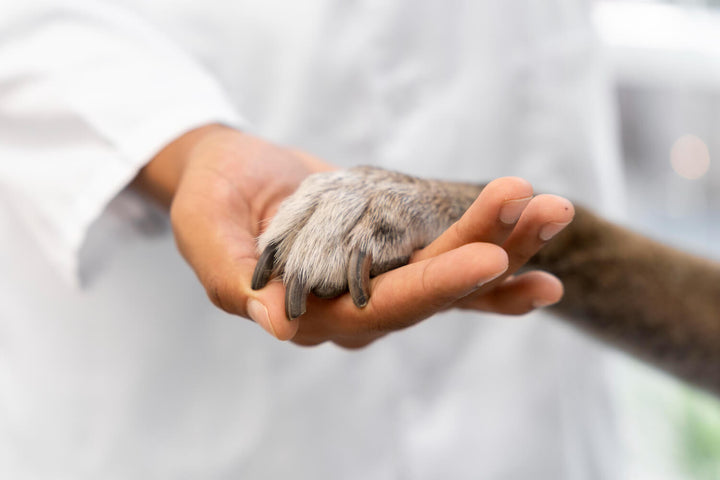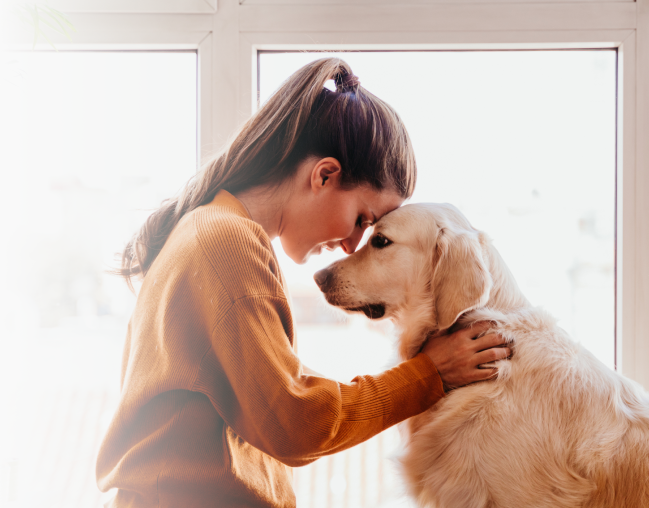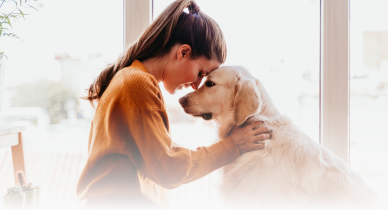The Australian Cattle Dog, also known as the Blue Heeler or Queensland Heeler, is a remarkable and versatile breed that's not just a loyal companion, but also a skilled herder. With a distinctive appearance and unmatched work ethic, this breed thrives on activity and purpose.
Did You Know these Facts about the Australian Cattle Dog?
-
The Australian Cattle Dog's lineage is a fusion of the robust Australian Dingo and the sturdy Collie breeds, resulting in a unique combination of traits.
-
Renowned for their intellect, these dogs exhibit remarkable problem-solving skills, making them excellent learners in various tasks.
-
Their boundless energy demands an active lifestyle. Engaging them in rigorous physical and mental activities is key to a well-balanced and happy Australian Cattle Dog.
-
This breed forms strong bonds with their owners, earning a reputation as devoted and protective companions.
- Sporting a short, weather-resistant double coat, these dogs come in a range of striking colors, often featuring speckled patterns called "blue" or "red."
The Australian Cattle Dog is a favored breed among working dog enthusiasts and families alike. In 2022 it ranked #48 on the AKC's list of popular dog breeds. Their exceptional abilities and loyalty contribute to their popularity in various roles, from farm helper to active family member.

Traits of the Australian Cattle Dog Breed
Personality. The Australian Cattle Dog is a dynamic blend of determination and resilience. Fueled by an innate drive to accomplish tasks, they are tenacious workers, capable of tackling various challenges with unyielding dedication. Their sharp instincts serve as a testament to their intelligent nature, making them quick learners who thrive on engaging tasks. Beyond their work ethic, these dogs are renowned for their unwavering loyalty, forming bonds that transcend the ordinary. Their devotion to their human companions is steadfast, and their protective instincts are coupled with a deep sense of companionship.
Family Life. When part of a family, the Australian Cattle Dog's unique traits shine brightly. Their protective and affectionate nature knows no bounds when it comes to their family. This breed excels at forming deep and lasting bonds, often becoming an integral part of the family unit.
However, it's important to be mindful of their herding heritage – a genetic inclination to gather and manage groups. This herding instinct might translate into attempts to "herd" children, other pets, or even to chase moving vehicles. To ensure harmony, proper training and guidance are paramount, channeling their instincts into positive behaviors that enhance their role as beloved family members.
Appearance. A picture of strength and agility, the Australian Cattle Dog boasts a muscular build and a compact frame that aligns seamlessly with their history as adept herders. These physical attributes enable them to excel in physically demanding tasks, making them perfect companions for outdoor enthusiasts and those who relish an active lifestyle.
The coat of an Australian Cattle Dog is a canvas of vibrant possibilities, ranging from the captivating blues to the fiery reds, often adorned with striking markings that accentuate their individuality and allure.
Sociability. Their social disposition is a testament to their adaptability and intelligence. While they may initially exhibit reserve around strangers, a well-socialized Australian Cattle Dog can evolve into a friendly and approachable companion.
Early and consistent exposure to various people, animals, and environments can help shape their social skills, allowing them to navigate new encounters with confidence and ease. With the right nurturing and guidance, their innate friendliness emerges, making them delightful additions to social gatherings and community interactions.
Average Sizes & Life Expectancy
- Height: 18 to 20 inches tall (46 to 51 cm)
- Weight: 35 to 50 pounds (16 to 23 kg)
- Life Expectancy: Around 12 to 16 years
Detailed Description of the Australian Cattle Dog Breed
The Australian Cattle Dog, also known as the Blue Heeler or Queensland Heeler, is a breed deeply intertwined with Australia's agricultural heritage. This unique and versatile dog has earned its reputation as an unwavering companion, diligent worker, and steadfast friend. From their distinctive physical traits to their exceptional intelligence and work ethic, let's delve into the captivating world of the Australian Cattle Dog.
Appearance. The Australian Cattle Dog's appearance embodies functionality and endurance. Their robust, muscular build is complemented by a compact frame, allowing them to navigate rugged terrains with agility and grace. Standing between 17 to 20 inches in height and weighing around 35 to 50 pounds, these dogs exhibit a balance of power and athleticism.
Their double coat offers protection against harsh weather conditions, with a dense undercoat and a smooth, weather-resistant outer layer. Coat colors range from striking blue speckled or mottled to rich red speckled, often accompanied by distinctive markings.
Temperament. This breed's temperament is a harmonious blend of their working roots and loyal nature. Australian Cattle Dogs are renowned for their determination, intelligence, and independence. Their innate herding instincts make them exceptional problem solvers and versatile workers, capable of herding livestock with precision and agility.
Beyond their work ethic, they form profound bonds with their families, displaying affection, loyalty, and unwavering protectiveness. This loyalty extends to their roles as vigilant guardians, making them excellent watchdogs.
Adaptability. Australian Cattle Dogs are adaptable to various lifestyles, but their energetic disposition thrives in environments that allow them ample physical and mental stimulation. They excel in active households where they can engage in rigorous activities like hiking, running, and obedience training. Apartment living is possible with sufficient exercise, but access to outdoor spaces is beneficial. Their alertness and intelligence also make them well-suited for dog sports such as agility, obedience trials, and herding trials.
Care Guidelines. To ensure the well-being of an Australian Cattle Dog, proper care is essential. Regular exercise is crucial to channel their boundless energy and prevent boredom-related behaviors. Mental stimulation through interactive toys, puzzles, and training exercises helps satisfy their intellectual needs. Grooming is relatively low-maintenance, with occasional brushing to keep their coat healthy and to manage shedding. Regular check-ups with a veterinarian, vaccinations, dental care, and a balanced diet are essential for their overall health and longevity.
Training Strategies. Training an Australian Cattle Dog requires a firm, consistent, and patient approach. Their intelligence and natural problem-solving abilities mean they thrive on mentally stimulating challenges. Positive reinforcement methods, such as treats, praise, and play, are effective in motivating them during training sessions. Early socialization is key to developing their interactions with other pets and people, curbing any potential signs of excessive herding behavior. Obedience training and engaging activities not only reinforce their bond with their owners but also provide outlets for their energy and mental prowess.
Notable in History and Pop Culture. The Australian Cattle Dog's roots trace back to the 1800s when early settlers in Australia sought a breed that could thrive in the challenging conditions of the rugged Australian outback. These dogs were bred by crossing native Dingoes with Collies, Dalmatians, and other breeds. Their exceptional herding abilities and adaptability made them indispensable on cattle ranches, earning them a place in Australian farming history.
In pop culture, the Australian Cattle Dog's intelligence and distinct appearance have garnered attention. They have been featured in various films, books, and television shows, showcasing their versatility and captivating presence. Notably, an Australian Cattle Dog named Bluey holds the Guinness World Record for the oldest dog, living to be an astounding 29 years and 5 months.
In conclusion, the Australian Cattle Dog stands as a testament to resilience, loyalty, and versatility. Their work ethic, coupled with their affectionate nature, makes them cherished companions and dedicated partners in various roles. Whether herding livestock, competing in dog sports, or simply being a loving member of the family, the Australian Cattle Dog's enduring spirit continues to captivate hearts around the world.
What to expect when living with the Australian Cattle Dog Breed
Personality. When considering owning an Australian Cattle Dog, be prepared for a loyal and intelligent companion. Their energetic and driven nature demands engaging activities and mental challenges. They're natural problem solvers and thrive on having a purpose, making them ideal for owners who are active and enthusiastic about training. Their protective instincts and watchful demeanor make them excellent watchdogs, ensuring the safety of their family and territory.
Ideal Environment. Australian Cattle Dogs flourish in environments where they have space to roam and opportunities for physical and mental exercise. Active individuals and families who enjoy outdoor activities like hiking, jogging, and agility training are well-suited for this breed. A home with a securely fenced yard allows them to burn off energy and explore their surroundings safely. These dogs require companionship and may become bored or even anxious if left alone for long periods.
Maintenance Level. The Australian Cattle Dog's maintenance level is moderate. Their short double coat requires regular brushing to control shedding and maintain its health. This not only keeps their coat looking its best but also promotes a stronger bond between owner and dog. While they're generally clean dogs, occasional baths can help keep them fresh and free of dirt. Their nails should be trimmed regularly, and dental hygiene is essential to prevent dental issues. Regular exercise and mental stimulation are key to preventing behavioral problems stemming from pent-up energy.
Overall Health Expectations and Best Health Tests for the Australian Cattle Dog Breed
Health Considerations. The Australian Cattle Dog is generally a robust breed, but like all dogs, they are prone to certain health issues. Common concerns include hip dysplasia, which can be evaluated through hip X-rays, and progressive retinal atrophy (PRA), a genetic eye disorder. Responsible breeders perform health tests to screen for these and other potential genetic issues.
Recommended Health Tests. Eye exams, as well as DNA tests for known genetic conditions, are essential to ensure the long-term health of your Australian Cattle Dog. Regular veterinary check-ups, a balanced diet, and regular exercise contribute to their overall well-being.
Best Nutrition, Diet & Supplements for the Australian Cattle Dog Breed
Nutrition and Diet. The Australian Cattle Dog's active lifestyle demands a well-balanced diet that supports their energy requirements. High-quality commercial dog food with real meat as the main ingredient is a good starting point. Look for foods that provide a balance of protein, healthy fats, and carbohydrates. Avoid foods with excessive fillers and artificial additives. Choose portion sizes that align with their activity level to prevent overfeeding or undernourishment.
Protein is crucial for Australian Cattle Dogs due to their muscular build and energetic nature. Protein supports muscle maintenance, growth, and overall vitality. Look for foods with a protein content of around 20-30%. Sources like chicken, beef, fish, and eggs are excellent choices. High-quality protein helps maintain their lean physique and supports their active lifestyle.
Healthy fats provide a concentrated source of energy and contribute to skin and coat health. Omega-3 fatty acids, found in fish oil and flaxseed, promote a shiny coat and support joint health. These fatty acids also have anti-inflammatory properties that benefit dogs prone to joint issues.
Hydration is Key. Ensure your Australian Cattle Dog always has access to fresh, clean water. Proper hydration is vital for digestion, temperature regulation, and overall vitality.
Supplements. While a balanced diet should provide most of their nutritional needs, some supplements can enhance their well-being. Omega-3 fatty acid supplements can further promote skin and coat health.
Glucosamine and chondroitin supplements may be beneficial for joint health, especially as the breed ages. Always consult with your veterinarian before adding supplements to your dog's diet.
Foods to Avoid. Avoid feeding your Australian Cattle Dog foods that are high in additives, artificial preservatives, and excessive amounts of sugar or salt. Foods that contain harmful ingredients like chocolate, grapes, raisins, onions, and garlic should be strictly avoided, as they can be toxic to dogs.
Divide their daily food portion into two meals to prevent overeating and maintain steady energy levels. Adjust portion sizes based on their activity level, age, and individual metabolism. Regularly monitor their weight and body condition to ensure they're receiving the right amount of food for their needs.
Grooming Requirements for the Australian Cattle Dog Breed
Coat Maintenance and Shedding. The Australian Cattle Dog has a short, dense double coat that provides protection against various weather conditions. While their coat is relatively low-maintenance, regular grooming is necessary to keep their skin and coat healthy. Australian Cattle Dogs shed year-round, with heavier shedding occurring during seasonal changes. A quick daily brushing using a bristle brush or grooming mitt can help remove loose hair and distribute natural oils, promoting a healthy coat. During shedding seasons, daily brushing can help manage the amount of loose hair in your home.
Paw Care and Hygiene. Regularly check their paws for any debris or foreign objects that may become lodged between the paw pads. Trim their nails every 2-4 weeks to prevent overgrowth and potential discomfort. Regular nail trimming also helps maintain proper foot alignment and prevents joint issues.
Ears and Eye Care. Inspect their ears for signs of redness, irritation, or a foul odor, which could indicate an infection. Clean their ears gently using a damp cotton ball, and avoid inserting anything into the ear canal. Keep their eyes clean and free from discharge by gently wiping the corners with a damp cloth.
Bathing. Bathing should be done as needed, usually every 6-8 weeks or when your dog becomes visibly dirty or smelly. Use a mild dog shampoo and thoroughly rinse to prevent skin irritation. Over-bathing can strip the natural oils from their coat, leading to dry skin.
Exercise Required for the Australian Cattle Dog Breed
Australian Cattle Dogs are known for their boundless energy and stamina. They require daily exercise to stay mentally and physically healthy. Engaging in various types of activities can help channel their energy and prevent boredom-related behaviors. Engage your Australian Cattle Dog in activities that challenge both their body and mind. Long walks, jogs, hikes, and agility training are excellent options. These dogs also excel in canine sports like flyball and obedience competitions.
Provide mental enrichment through puzzle toys, interactive games, and training sessions. Mental challenges are just as important as physical exercise for keeping your dog happy and well-behaved. They need at least 60-120 minutes of moderate to high-intensity exercise per day - a couple of short walks round the block just won't be enough. If their exercise needs aren't met, they may become bored and resort to destructive behaviors.
Training Tips for the Australian Cattle Dog Breed
Do…
-
Australian Cattle Dogs respond best to positive reinforcement training methods. Use treats, praise, and rewards to motivate and encourage desired behaviors.
-
Consistency is key in training. Establish clear rules and routines to help your dog understand what is expected of them. Use the same commands and cues consistently to avoid confusion.
-
Early and ongoing socialization is crucial for Australian Cattle Dogs. Expose them to various people, animals, and environments to help them become well-adjusted and confident adults.
-
Teach them basic commands like sit, stay, come, and leash walking. These commands provide a foundation for good behavior and ensure their safety in different situations.
-
Australian Cattle Dogs thrive on mental challenges. Teach them tricks, advanced commands, and engage in activities that require problem-solving skills.
Don't…
- Use harsh corrections or punishment, as it can damage the trust and bond between you and your dog, leading it to become anxious and fearful.
The Australian Cattle Dog Breed is Suitable For
The Australian Cattle Dog thrives in active and dynamic households that can provide the mental and physical stimulation they need. They are well-suited for families with older children who understand how to interact respectfully with dogs. These dogs require ample space to run and play, so homes with a securely fenced yard are ideal. Their loyal and protective nature also makes them excellent watchdogs for the home.
When properly socialized from a young age, Australian Cattle Dogs can get along well with other pets in the household, including dogs and cats. However, their herding instinct may lead them to attempt to "herd" smaller pets, so close supervision and proper training are essential.
The Australian Cattle Dog Breed is Not Suitable For
Australian Cattle Dogs may not be suitable for apartment living or homes with limited outdoor space. Their high energy levels and need for regular exercise and mental stimulation may lead to frustration and behavioral issues in confined environments. Additionally, they may not be the best choice for families with very young children due to their strong herding instincts and tendency to nip at heels.
Famous Australian Cattle Dog Owners
-
Kaley Cuoco - The actress Kaley Cuoco, known for her roles in TV shows like "The Big Bang Theory," is also a proud owner of an Australian Cattle Dog named "Norman." Cuoco often shares photos and videos of her beloved dog on social media, showcasing their strong bond and adventurous outings. Norman has become a popular figure among Cuoco's fans, highlighting the breed's loyal and affectionate nature.
-
Tom Hanks - The award-winning actor and his Australian Cattle Dog, named "Wally," are often seen on hikes and outdoor adventures. Wally even has his own Instagram account, showcasing their bond and love for the outdoors.
- Miranda Lambert - The country music superstar is known for her love of animals, and her Australian Cattle Dog, named "Delta Dawn," often accompanies her on tour and outdoor activities.
Accomplishments of the Australian Cattle Dog Breed
The Australian Cattle Dog's remarkable herding and working abilities have earned them a prominent place in various canine sports and competitions. They excel in agility, obedience, and herding trials. Their versatility is showcased through their roles as search and rescue dogs, therapy dogs, and service animals. This breed's strong work ethic and dedication have made them invaluable in various roles where intelligence, athleticism, and reliability are required.
Beyond the sporting arena, their exceptional talents have led them to excel in more serious and life-saving roles. Australian Cattle Dogs are often chosen as search and rescue dogs due to their exceptional scent detection and tracking abilities. Their unwavering determination and incredible sense of purpose have been instrumental in locating missing individuals in challenging terrains and conditions.
Additionally, their empathetic and intuitive nature has made them wonderful candidates for therapy dog work. They have the ability to provide comfort and emotional support to those in need, contributing positively to the mental well-being of individuals in hospitals, nursing homes, and various therapy settings. In some instances, Australian Cattle Dogs have also proven themselves as reliable service animals, assisting individuals with disabilities in performing daily tasks. Their intelligence, obedience, and strong work ethic make them well-suited to tasks that require precision and focus.
The Australian Cattle Dog's unique characteristics and striking appearance have made them a favorite in the world of entertainment. They have appeared in movies, TV shows, and commercials. These dogs are known for their appearances in movies like "Babe" and the TV series "Blue Heelers," where they showcased their herding skills and intelligence. Their depiction in pop culture reflects their status as exceptional working dogs and beloved companions.

The History of the Australian Cattle Dog Breed
The history of the Australian Cattle Dog is a tale of innovation, adaptability, and purpose-driven breeding. In the early 1800s, Australian ranchers faced a challenge: they needed a dog that could handle the harsh conditions of the Australian outback and assist in herding and managing cattle over vast distances. Their solution was the creation of the Australian Cattle Dog, a breed that would become an integral part of the country's farming and herding culture.
Creation and Purpose. The breed's foundation traces back to a mix of Collies, Dalmatians, and other breeds known for their herding and guarding capabilities. Thomas Hall, a cattle rancher, played a pivotal role in the breed's development. He crossed Collies with Dingoes, resulting in a breed that inherited the dingo's endurance and adaptability, as well as the Collie's herding instincts. The Australian Cattle Dog's primary purpose was to help cattle ranchers manage their livestock efficiently.
These dogs were bred to be hardworking, intelligent, and capable of covering vast distances. They excelled in herding cattle, nipping at their heels to direct them and managing unruly livestock. Their ability to handle the challenging terrain, extreme weather conditions, and the untamed nature of Australian cattle made them indispensable companions to ranchers.
Early Roles and Evolution. Over time, the breed's characteristics evolved to suit their working environment. Their short, weather-resistant coat provided protection from harsh elements, and their strong build and agile frame allowed them to maneuver through rugged landscapes. Their intense loyalty to their handlers and their alertness in the field ensured that they could respond to any sudden changes in the cattle's behavior.
Changes and Modern Impact. As Australia's cattle industry modernized, so did the role of the Australian Cattle Dog. Today, while they still excel in herding and working on farms, their versatile abilities have led them to various roles, including search and rescue, therapy work, and even as loving companions in households.
Despite these changes, their core traits of intelligence, tenacity, and a strong work ethic remain a testament to their original purpose-driven breeding.
The Australian Cattle Dog's journey through history is a story of adaptation and success. From their early days as invaluable herding companions to their modern roles as multifaceted working dogs and beloved family pets, they continue to capture the hearts of people around the world with their unique blend of resilience, intelligence, and unwavering loyalty.
The Australian Cattle Dog Breed Standard
The Australian Cattle Dog is classified under the Herding Group by the American Kennel Club (AKC). The AKC's Breed Standard for Australian Cattle Dogs outlines the ideal characteristics that define this breed. This standard serves as a benchmark for breeders and judges in dog shows, ensuring that the breed's integrity and qualities are maintained.
The Australian Cattle Dog Club of America (ACDCA) is the official breed club for Australian Cattle Dogs in the United States. Their dedication to promoting responsible breeding, education, and the welfare of the breed is evident in their activities, events, and resources. To learn more, visit their website: ACDCA.
General Appearance
Head. The Australian Cattle Dog boasts a strong and alert head, reflecting their intelligent and attentive nature. Their skull is slightly rounded between the ears, housing eyes that radiate alertness. The head's overall appearance exudes a sense of purpose and readiness.
Muzzle and Nose. Their medium-length muzzle tapers towards a well-defined black nose. The muzzle's length and structure contribute to their remarkable scenting abilities, while their dark nose complements their coat color.
Teeth. Australian Cattle Dogs feature a strong jaw with a complete set of healthy teeth. Their teeth meet in a scissors bite, allowing them to grip and control livestock effectively.
Neck. A strong and muscular neck provides the Australian Cattle Dog with the strength necessary for their herding and working tasks. The neck smoothly transitions into their sturdy shoulders, contributing to their balanced appearance.
Body. Their well-developed body showcases a deep chest that provides ample lung capacity for endurance. Their compact and muscular frame is designed for agility and power, enabling them to navigate rugged terrains with ease.
Tail. The Australian Cattle Dog's tail is set moderately low and naturally tapers towards the tip. Often docked at a short length, the tail serves as a balance aid while they work, maintaining their stability.
Coat. This breed flaunts a weather-resistant double coat that's dense and short. The undercoat offers insulation against varying climates, while the outer coat's texture provides protection from harsh elements.
Size. Australian Cattle Dogs fall into the "medium-sized" category. They typically weigh between 35 to 50 pounds (16 to 23 kg) and stand around 17 to 20 inches (43 to 51 cm) tall at the shoulder.
Gait. Their gait is smooth, free, and purposeful, reflecting their working heritage. With a balanced and ground-covering stride, Australian Cattle Dogs exhibit an efficient trot, allowing them to move for extended periods without tiring.
In summary, the Australian Cattle Dog's general appearance mirrors their robust and hardworking nature. From their intelligent head to their sturdy body and agile gait, every aspect of their appearance serves a purpose in helping them excel in herding and various activities.
Reputable Breeders
It's essential to acquire a dog from responsible and ethical breeders who prioritize the health and well-being of their puppies. Here are a few reputable Australian Cattle Dog breeders along with their URLs:
Top Shelters for Adoption
Adopting a dog can be a rewarding experience. Here are five shelters where you might find an Australian Cattle Dog in need of a loving home:
Top 5 Frequently Asked Questions & Answers about the Australian Cattle Dog Breed
Are Australian Cattle Dogs good family pets?
Yes, they can be excellent family dogs with proper training and socialization.
Do they get along with other pets?
Early socialization is crucial; they can coexist with other pets if introduced properly.
How much exercise do they need?
They are highly active; daily exercise and mental stimulation are essential.
Do they shed a lot?
Yes, they shed year-round, with heavier shedding during seasonal changes.
Are they easy to train?
Yes, they are intelligent and responsive to training, but consistency and positive reinforcement are key.
A Final Tip for Bringing an Australian Cattle Dog into Your Life
If you're considering bringing an Australian Cattle Dog into your life, you're welcoming a loyal and energetic companion. Their intelligence, versatility, and strong work ethic make them ideal for active families and individuals who can provide them with mental and physical stimulation. Whether you're seeking a skilled herder, a loyal partner for dog sports, or a loving family member, the Australian Cattle Dog's unique qualities and unwavering devotion will enrich your life in ways you can't imagine.
Valuable Resources for Your Journey to Parenting an Australian Cattle Dog
At Felicitails you will find many wonderful services, supplies and guides for your life ahead with a loving pup at your side.

Hope You Enjoyed The Read!
Tag Cloud

A warm welcome from Lindsay & Huck (my English Pointer). Hope you enjoy the read and find just what you are looking for when it comes to living your best life with your loved pets.

-
Dog Breeds
(42)
-
Emotional Support Animals
(10)
-
Dog Grooming
(6)
-
Dog Health
(18)
-
Life with a Dog
(18)
-
Dog Nutrition
(11)
-
Service Animals
(11)
-
Dog Training
(5)






